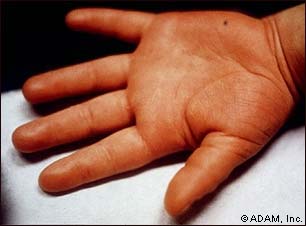Kawasaki Disease (KD) is also called “muco-cutaneous lymph node syndrome.” The cause of Kawasaki Disease has not known.
Kawasaki Disease, usually after a period of time and even without consulting a doctor, resolves itself and the patient is fine. Without consulting a doctor, however, potential serious complications may develop and may not be recognized.
Kawasaki Disease usually affects children younger than 4 years old with the majority being less than 2 years; although cases in older children have also been reported.
Findings of high fever and enlarged lymph glands in Kawasaki Disease seem to show it as an inflammatory process. Because the inflammation often involves the blood vessels of the body, Kawasaki Disease is felt to be an inflammation of a blood vessel. The cause of the inflammation is not known.
Some of the signs of Kawasaki Disease include:
1. Prolonged high fever (lasting longer than 5 days)
2. A non-specific rash that often involves the groin area
3. Painful joints
4. Red eyes, without discharge
5. Very red lips and tongue
6. Enlarged neck lymph gland(s)
7. “Puffy” hands and feet occasionally followed by peeling of their superficial skin
8. Irritability in younger patients. In some children, enlargement of the gall bladder can cause abdominal pain and vomiting.
If there is no heart involvement after 1 year from the diagnosis of this disease, the patient is often released from further cardiology evaluations. The majority of the patients fall in this category, and they have an excellent prognosis.
Consult your doctor with any questions or concerns.
